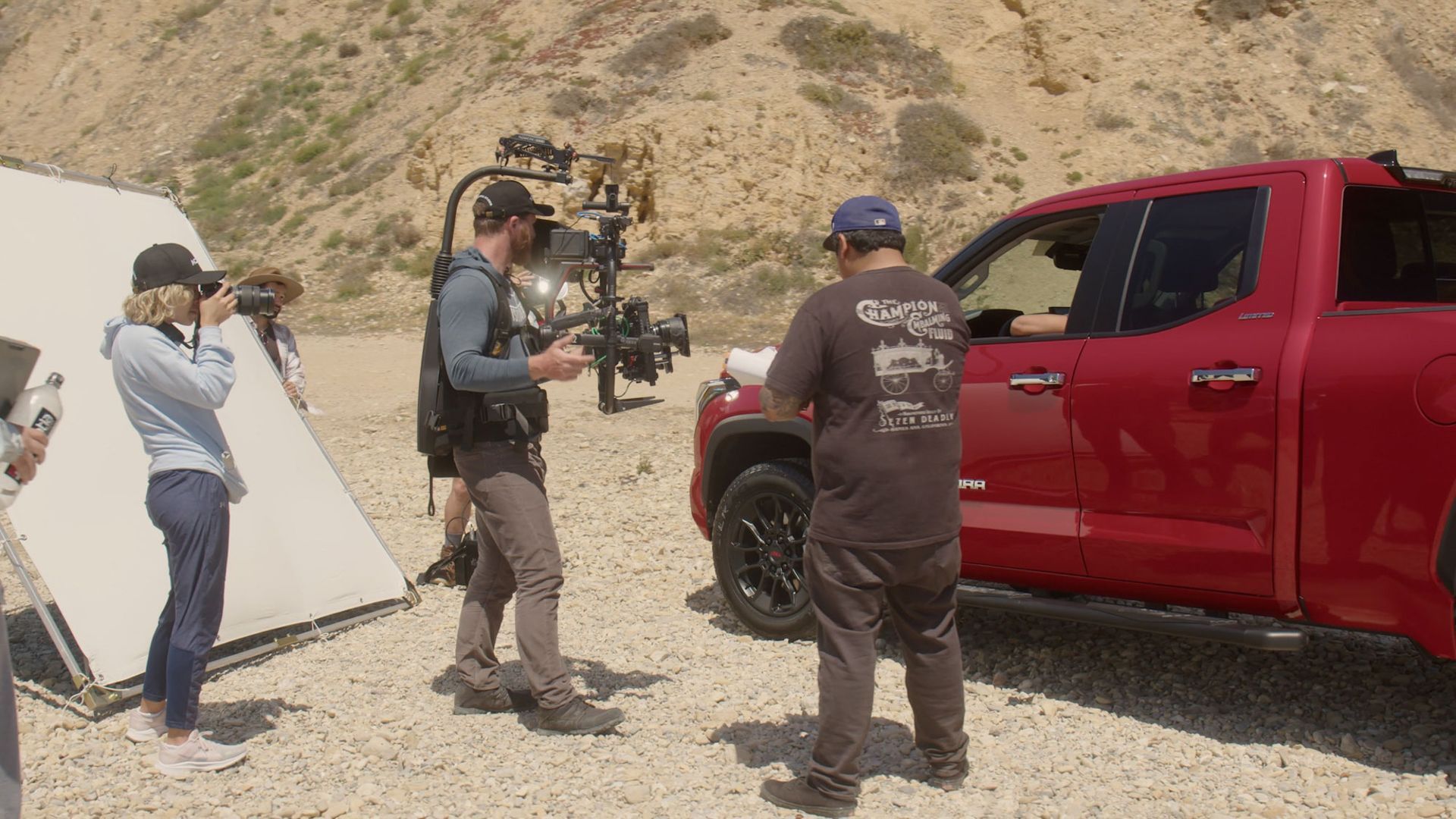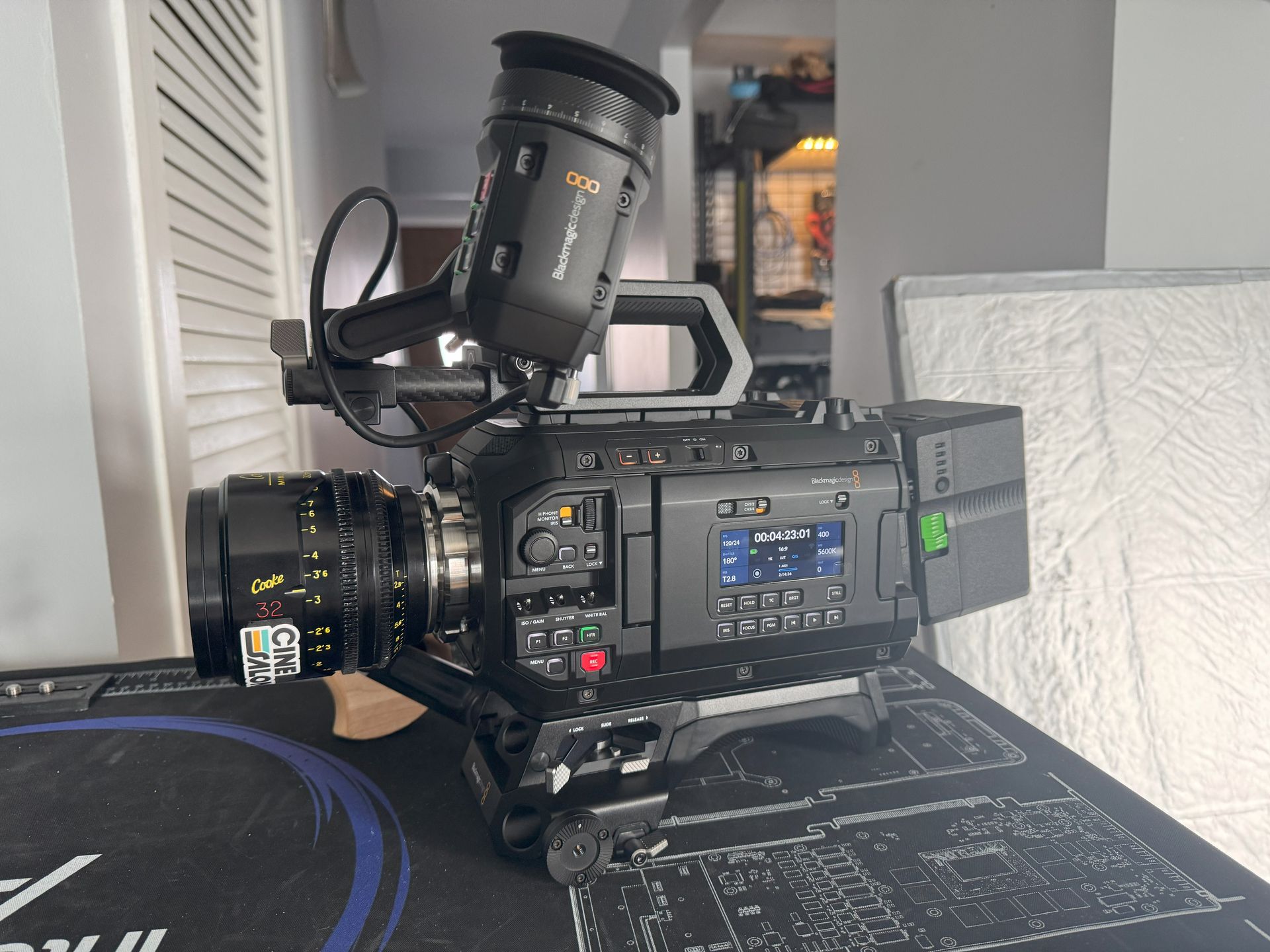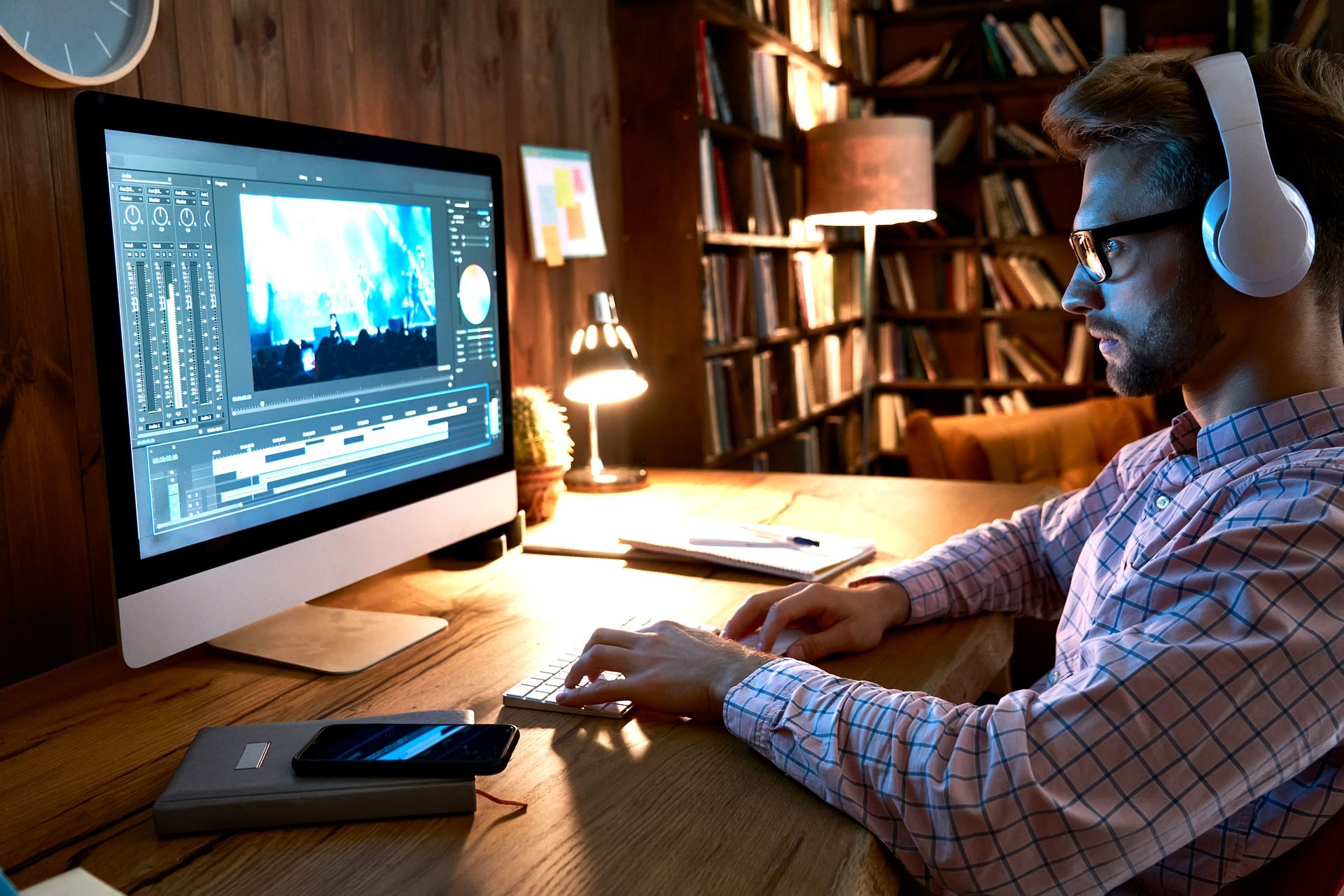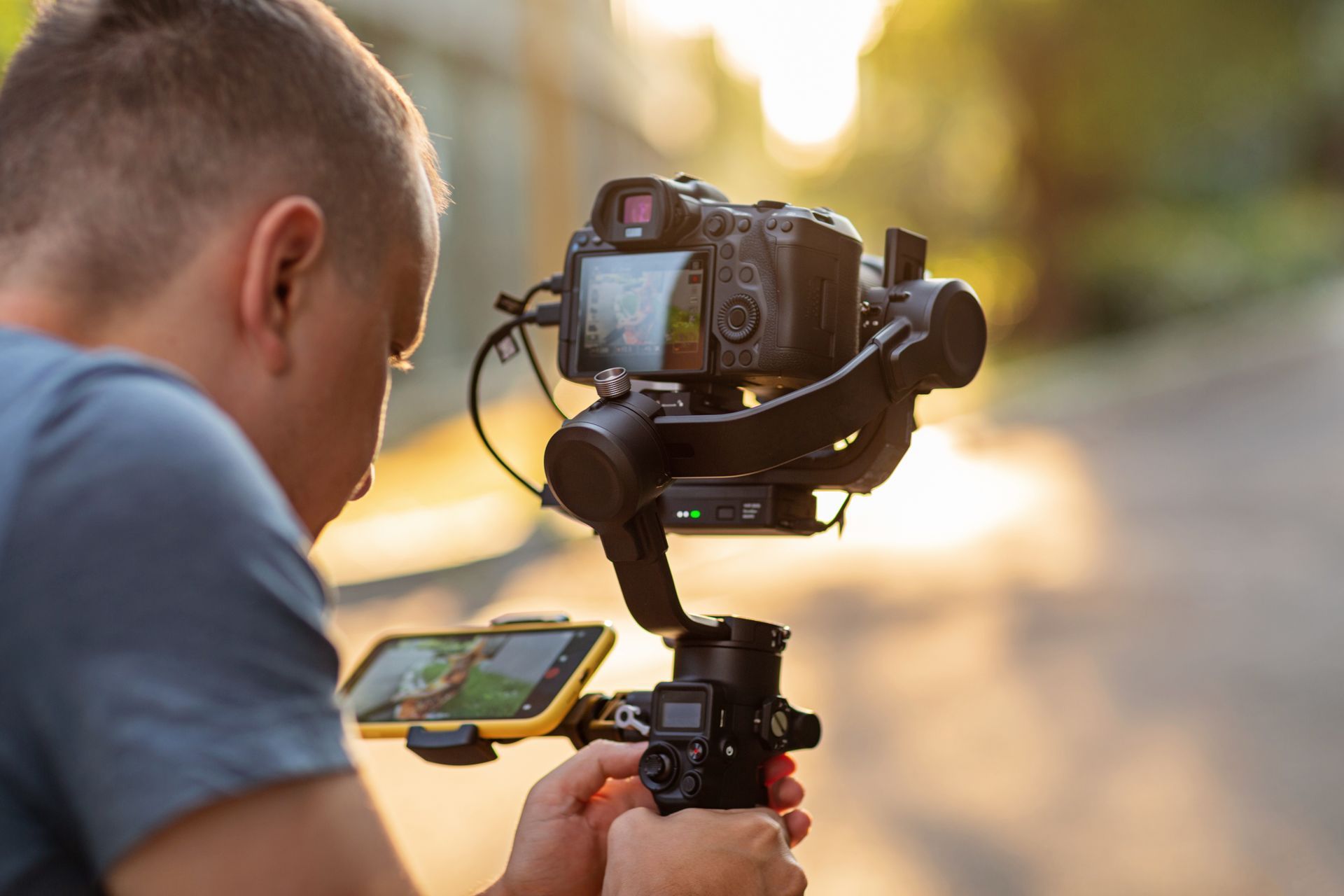What Are the Best Practices for Making a Before and After Video?

Before and after films are an effective way to illustrate change if that's what you're trying to do. It takes more than just filming scenes to make a compelling before-and-after video. In this article, we'll discuss how to make a before and after video that engages viewers and helps you reach your objectives.
Making a compelling before-and-after video requires more than just filming the change. Knowing your intended audience and what you hope to achieve with your video. If you can answer these questions, you'll be well on your way to making a film that is well-targeted and easy to understand.
Careful planning, execution, and editing are vital for a "before and after" film to be convincing and exciting. The easiest way to tell your narrative and keep your audience interested in your film is to follow the guidelines for developing a before and after the video. Plan the transition, utilize proper lighting, and prepare your film for online dissemination.
What Is a Before and After Video, and Why Is It Effective?
Video footage taken before and after the topic or project was completed is known as a "before and after the video." A film on the subject usually follows footage of the case in its unaltered state after any changes have been made. When utilized in marketing, commercial, or instructional materials, before-and-after movies are a great way to showcase a person's or business's abilities.
There are several reasons why "before and after" films are helpful. Secondly, they offer a visual picture of the change, which may be more potent than spoken or written explanations. Viewers may gain an appreciation for the effort put into the makeover by comparing the before and after images.
Second, showing before and after footage helps reassure prospective buyers. A person or organization can build their reputation and skill by showing that it can successfully convert a project.
Last, before-and-after movies may be an exciting and convincing approach to conveying data. The system allows viewers to quickly see the finished product without being bogged down by much exposition. The video's aesthetic elements may make the content more engaging and shareable, expanding its reach.
10 Best Practices for Making a Before and After Video
1 - Define Your Goals
Defining your goals is a crucial best practice when creating a before and after the video. With clear objectives, creating a video that effectively communicates your message and resonates with your target audience is more accessible.
Ask yourself what you want to achieve with the video to define your goals. Are you trying to showcase your work, build your brand, or attract new clients or customers? Once you clearly understand your objectives, you can create a video that aligns with your goals.
One aspect of defining your goals is identifying the key message you want to communicate through the video. This message should be clear, concise, and memorable. Your letter should focus on the transformation that has taken place and the impact it has had. It would help if you also considered the tone of your message.
Do you want your video to be emotional, inspiring, or informative? Determining the style will help guide your creative decisions regarding editing, music, and graphics. Another important consideration when defining your goals is determining your target audience. Who is the video for? Are you targeting potential clients or customers, or are you showcasing your work to other professionals in your industry?
Understanding your target audience's preferences, interests, and pain points will help you create a video that resonates with them and encourages them to take action. Defining your goals also involves establishing a call to action. A call-to-action is an instruction that tells the viewer what to do next.
It could be as simple as asking them to visit your website or contact you for more information. The call to action should be clear, compelling, and aligned with your goals. It would be best to consider how you would measure the success of your call to action. Will you track website visits, leads, or sales?
Defining your goals is a crucial best practice when creating a before and after the video. You can create a video that aligns with your goals by identifying your objectives, target audience, and call-to-action. Remember to remember your goals throughout the video creation process, from planning to editing to publishing.
2 - Select a Suitable Subject
Selecting a suitable subject is another critical best practice when creating a before and after video. Choosing the right topic can make all the difference in the impact of your video. The topic should demonstrate an apparent transformation and have a compelling story. Here are some factors to consider when selecting a suitable topic for your before and after video:
- Firstly, consider the visual impact of your subject. Your subject should be something that can be visually represented and demonstrated through footage. This thing could be anything from a physical space, a product, or a person's appearance. The transformation should be visible and easily discernible.
- Secondly, consider the emotional impact of your subject. Your subject should be something that elicits an emotional response from your audience.
- Thirdly, consider the relevance of your subject to your target audience. Your subject should be something your audience can relate to and find valuable. This point could solve a problem or address a pain point.
- Fourthly, consider the accessibility of your subject. Your subject should be something that can be easily accessed and documented. This could be something that you have worked on personally, or it could be a collaboration with someone else. By selecting a subject that is accessible, you can ensure that you have the necessary footage and information to create a compelling before and after the video.
Finally, consider the diversity of your subjects. If you are creating multiple before and after videos, selecting issues that vary in type and scope is essential. This will keep your content fresh and exciting and showcase your versatility as a professional.
In conclusion, choosing a good subject for a before-and-after video is essential. You may make your video engaging by considering aesthetics, accessibility, and subject diversity. Choose topics with intriguing stories and evident transformations.
3 - Capture High-Quality Footage
One of the most crucial recommendations for making a before-and-after film is to record high-quality footage. The success of your movie entirely depends on the quality of the material you use. The best videos are visually engaging, accurately portray the change, and convey the point. Here are some things to keep in mind when filming a before-and-after video:
First, make sure you have everything you need. High-quality cameras, lights, and microphones all fall under this category. Tripods and stabilizers may also be required, depending on the nature of your video's subject. Get appropriate tools for your job and budget, and learn how to use them well.
Second, think about the overall visual style of your photographs. It would be best if you framed your pictures such that they are appealing to look at. The rule of thirds, foreground, background components, and motion are all tools you may use to improve your compositions. First, decide what you want to say, and then think about how your pictures may best convey that.
Finally, be aware of the illumination. High-quality video production relies heavily on having enough lighting. Remember the time of day and the available natural lighting, or strategically use artificial lighting to get the desired impression. Ensure that your lighting is constant throughout your photographs. Avoid solid or unpleasant lighting that might detract from the subject.
Fourth, think about the sound quality. Clear audio is equally as crucial as clear graphics. Invest in high-quality microphones capable of capturing clean, even sound. Think about how sound will travel through the space you'll be recording, and utilize windshields or filters if necessary to reduce unwanted sounds.
Last but not least, get enough shots to make a good movie. Depending on the length of your film, you may need to shoot many hours of footage to make a short, compelling video. Consider a wide range of shooting positions, transformation phases, and subject interactions to produce a dynamic and engaging result.
In conclusion, recording high-quality film while making a before-and-after video is essential. Using the correct equipment, considering composition, lighting, and audio quality, and shooting enough material, you may make a visually appealing film that delivers your message successfully. Take time to arrange your shots and narrative, then shoot high-quality movies.
4 - Use Effective Editing Techniques
Using effective editing techniques is another critical best practice when creating a video. Editing can transform raw footage into a polished, engaging video that communicates your message effectively. Effective editing can also help you highlight the transformation and create a compelling story. Here are some factors to consider when using effective editing techniques:
- Firstly, consider the pacing of your video. The pace should be consistent throughout the video and should align with the message you want to communicate. Use jump cuts or cross-dissolves to create a seamless transition between shots, slow motion, or time-lapse to create a specific effect.
- Secondly, consider the use of music and sound effects. Music can enhance the emotional impact of your video and create a specific mood or atmosphere. Sound effects can add interest and detail to your shots. Choose music and sound effects relevant to your message and target audience, and ensure they are high quality.
- Thirdly, consider the use of text or graphics. Text and graphics can reinforce your message and communicate information that may not be clear from the footage alone. Consider using text or graphics to highlight key points or statistics or to provide context to the transformation.
- Fourthly, consider the overall tone and style of your video. The tone should align with your message and target audience, and the technique should be consistent throughout the video. Consider using color grading or other visual effects to create a specific look or atmosphere.
Finally, ensure that your video is well-structured and tells a compelling story. Consider using a narrative structure, such as a beginning, middle, and end, to create a clear story arc.
5 - Optimize the Video for Different Platforms and Devices
You can reach and keep the attention of your intended audience on any platform or device by optimizing your video. These are some things to keep in mind while adjusting your video settings for various mediums and gadgets:
Your video's aspect ratio is the first thing to think about. Ensuring your video suits your platform is crucial since different platforms and devices have varying aspect ratios. YouTube videos typically use a 16:9 aspect ratio, whereas Instagram Stories often have a 9:16 ratio. You may need to tweak your video's composition to get the best results across all channels and devices.
Second, think about the quality of your video's resolution. The video quality improves with increased resolution but at the cost of increased download time and data usage. Use a smaller solution for mobile devices, or give them a choice of answers. Making your movie accessible and quick to load is facilitated by this.
Lastly, think about the video file format. It's crucial to ensure your video is compatible with your platform because different systems and devices support other file formats. The most popular video file types are MP4, MOV, and AVI.
Fourth, think about how long your video should be. Ensuring your video is at the maximum length for your chosen platform or device is crucial. While lengthier films may work better on websites and other platforms, social media platforms favor shorter videos.
Last but not least, think about including captions or subtitles. Including captions and subtitles in your film can not only benefit those who are deaf or hard of hearing but will also increase engagement by facilitating comprehension. You should add captions or subtitles if your video contains crucial details or speech.
In conclusion, if you make a before-and-after film, you must ensure it works well on various devices. You may make your video accessible and exciting to a wide range of viewers by thinking about factors and previewing your movie on several platforms to check for compatibility.
6 - Show Multiple Angles
Showing multiple angles is a critical best practice when creating a before and after video. You can provide a more detailed and compelling view by showcasing the transformation from different angles. Here are some factors to consider when showing multiple angles in your before and after video:
- Firstly, consider the purpose of showing multiple angles. Multiple angles showcase different aspects of the transformation and provide a more detailed view. This point helps to make the change more impactful and easier to understand for the viewer.
- Secondly, consider the number of angles you want to show. Depending on the subject of your video, you should show multiple angles or just a few. Consider the story you want to tell and how multiple angles can enhance that story.
- Thirdly, consider the placement of your cameras. Ensure your cameras are positioned to provide a clear view of the subject and the transformation. You may need to adjust the order of your cameras to capture the best angles and shots.
- Fourthly, consider the editing process. Editing multiple angles can be challenging, but it can also be gratifying. Consider using editing techniques like split-screen or picture-in-picture to showcase multiple angles visually interestingly.
Finally, consider the impact of showing multiple angles on the overall length of your video. Depending on the number of pitches you offer and the size of your footage, your video may be longer than expected. Consider ways to edit your footage to ensure that your video remains engaging and concise.
In summary, showing multiple angles is a critical best practice when creating a before and after video. Remember to test different angles and shots during filming and to consider how multiple angles can enhance the story you want to tell.

7 - Add Text or Graphics to Enhance the Message
Adding text or graphics to a before and after video can effectively enhance the message and provide additional context for viewers. Text and graphics can help explain the process, highlight key features, and reinforce the video's overall message. Here are some best practices for using text and graphics in a before and after video:
- Keep it simple: When adding text or graphics, it's essential to keep it simple and easy to understand. Avoid using complicated or technical jargon that may confuse viewers. Use clear and concise language that is easy to read and understand.
- Use the right font: Your chosen font can significantly impact your text's perception. Make sure to choose a legible font that fits your video's tone. Avoid using overly decorative or hard-to-read fonts.
- Incorporate branding: It can be helpful to incorporate branding elements such as logos or color schemes. This can help reinforce brand recognition and make the video feel more cohesive.
- Use animation: Animating text or graphics can significantly add visual interest to your video. Consider using animations to highlight specific features or steps in the transformation process. However, be careful not to overuse animation, as it can be distracting or overwhelming.
- Provide context: When adding text or graphics, provide context for viewers. Explain what they're seeing and why it's essential. This step can help viewers understand the transformation process and appreciate the skill level.
- Test for readability: Before finalizing your video, test the readability of your text and graphics. Watch the video on different devices and screen sizes to ensure the text is legible and easy to read. Consider using contrasting colors to make the text stand out against the background.
In summary, adding text or graphics to a before and after video can help enhance the message and provide additional context for viewers. You can create a video that effectively communicates your message and engages your audience by keeping it simple.
8 - Keep the Video Concise and Engaging
Keeping the video concise and engaging is a critical best practice when creating a before and after video. A brief and engaging video can help maintain the viewer's attention and ensure your message is communicated effectively. Here are some factors to consider when keeping your video concise and engaging:
- Firstly, consider the length of your video. Shorter videos perform better on social media platforms, while longer videos are better suited for websites and other platforms. Consider how much footage you need to showcase the transformation and how you can make the most impact quickly.
- Secondly, consider the pacing of your video. The pacing should be consistent throughout the video and should align with the message you want to communicate. Use jump cuts or cross-dissolves to create a seamless transition between shots or slow motion or time-lapse to create a specific effect.
- Thirdly, consider the use of music and sound effects. Music can enhance the emotional impact of your video and create a specific mood or atmosphere. Sound effects can add interest and detail to your shots. Choose music and sound effects relevant to your message and target audience, and ensure they are high quality.
- Fourthly, consider the use of text or graphics. Text and graphics can help reinforce your message and communicate information that may not be clear from the footage alone. Consider using text or graphics to highlight key points or statistics or to provide context to the transformation.
Finally, consider the overall tone and style of your video. The tone should align with your message and target audience, and the class should be consistent throughout the video. Consider using color grading or other visual effects to create a specific look or atmosphere.
Keeping the video concise and engaging when creating a before and after the video. By considering the length, pacing, music and sound effects, text or graphics, and tone and style of your video, you can create a polished, engaging video that communicates your message effectively. Remember to make the most impact in the shortest time and maintain the viewer's attention throughout the video.
9 - Showcase Your Expertise and Skills
A compelling method to exhibit your ability to prospective clients, companies, or partners is through a before and after film. A before-and-after movie provides a visual depiction of how you can convert a project from its raw condition to a polished result. A fascinating before-and-after video may be created by following these guidelines.
Identify your intended audience and your video's purpose before you begin production. Is it your goal to network with other experts in your field, expand your customer base, or get a job? A well-defined aim can help you focus your video production efforts and create material that will resonate with your intended viewers.
You need to carefully prepare and execute your shots if you want your before and after the film to turn out well. Consider how to best present your work in terms of camera placement, lighting, and motion.
If your photographs are stable and unshaken, you might want to invest in a tripod or stabilizer. If you want to ensure you get the right shots and don't get off course during filming, it might assist in making a bullet list or storyboard ahead of time.
One of the most valuable features of a before-and-after video is that it demonstrates the transformation in action. Film the beginning of the project as well as any intermediate phases or completed stages. This may add credibility to your work by letting visitors know you put much effort and thought into every detail.
Be sure to use high-quality video; this will significantly impact how people view your project. Invest in high-quality tools like a professional camera and lighting for clear, sharp film. You may want a microphone or audio recorder to ensure high-quality sound capture. If feasible, choose a setting with little to no ambient noise or other distractions.
Once you have collected all of your material, it is time to edit your film. Use video editing tools to cut and arrange your footage, throw in some music or sound effects, and improve the film's overall quality.
Editing decisions should serve the purpose and the intended readership. Don't use transitions or products that don't add to the video's message and only make it seem overproduced.
A well-produced "before and after" movie may be invaluable for promotional purposes. Yet, careful planning, preparation, and execution are required to create an excellent before and after the video. In this piece, we'll go through how to film a "before and after" video so that your transformation looks its very best.
Lastly, toward the film's end, showcase your final result prominently. This is a fantastic opportunity to show off your knowledge and make an impression on your audience. To get people interested in learning more about your work, you might want to include a call to action, such as a link to your website or social media sites.
In conclusion, a before-and-after movie may be a powerful tool for introducing your work to prospective clients, companies, or partners. Adhering to these guidelines can make an exciting video, drawing attention to your features.

10 - Choose the Right Music and Sound Effects
Choosing the right music and sound effects can be a critical aspect of making a before and after the video. The right audio can enhance the overall feel and impact of the video and make it more engaging and memorable for viewers. Here are some best practices to consider when selecting music and sound effects for your before and after video:
Consider the tone and mood: Before choosing any music or sound effects, consider the tone and mood you want to convey in your video. Is it upbeat and energetic or calm and relaxing? The right music can help set the tone and create the desired atmosphere for your video.
- Make sure that the music and sound effects you choose are relevant to the content of your video.
- Avoid using generic or stock music that doesn't fit the tone or message of your video.
- Consider using royalty-free music or sound effects to avoid any copyright issues.
Balance the volume: When adding music and sound effects to your video, balance the volume levels. You don't want the audio to overpower the visuals or make hearing any important narration or dialogue difficult. Test the volume levels on different devices to ensure the audio sounds good across all platforms.
Use sound effects sparingly: While sound effects can be a great way to enhance the impact of your video, they should be used sparingly. Too many sound effects can distract from the visuals or make the video feel overproduced. Consider using sound effects strategically to highlight specific moments or actions in the video.
Choose the right genre: Different genres of music can evoke different emotions and moods. Consider the message you want to convey in your video and choose a genre that matches that tone. For example, suppose you're showcasing a dramatic transformation. In that case, you may want to use more orchestral or cinematic music, while a fun and lighthearted video may benefit from pop or upbeat music.
Don't forget about silence: Sometimes, silence can be just as powerful as music or sound effects. Consider leaving some parts of the video without any audio to create a sense of tension or anticipation. This can also help highlight important moments in the video and make them stand out.
In summary, choosing the right music and sound effects can significantly enhance the impact of a before and after video. By considering the tone, relevance, and use of silence, you can create a video that is engaging and effective in conveying your message.
Conclusion
Finally, a captivating before-and-after video demands strategy and attention to detail. Define your goals, choose a good subject, shoot high-quality films, and edit well. Communicating the shift and making the audience experience it is crucial.
By carefully preparing and executing the video, you may make a visually great and exciting film to promote your work. Always emphasize transformation and your work's influence in your video. Finally, demonstrate your competence to develop confidence and credibility with potential clients. Use these best practices to create a stunning visual tale that shows your work and develops credibility.

Get total clarity on your video marketing and paid media with our FREE comprehensive data audit.
CINESALON NEWS
POPULAR POSTS
Like what you read?
Interested in having video do more for you? Give us a shout on the form or book a call.
We make your complex ideas simple to everyone else.
Do video marketing
better.
Hire the experts at CineSalon.
Quick Nav
Company
Locations
Case Studies
Services
All Rights Reserved | CineSalon







